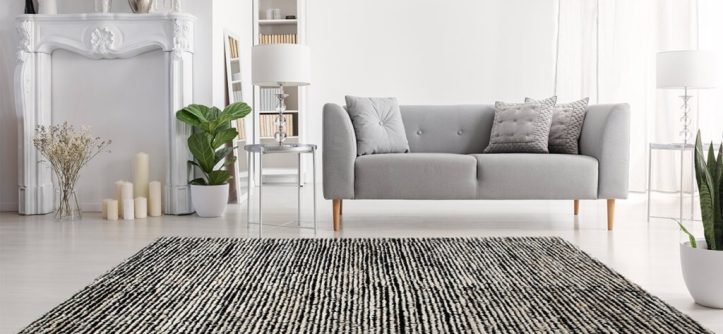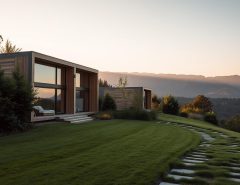A well-chosen rug can be the transformative element in your home, the anchor that ties a room together, or the vibrant exclamation point that defines your style. It’s more than just a floor covering; it’s a foundational piece of your interior design, capable of adding warmth, texture, color, and personality to any space. However, with a seemingly endless array of options in materials, sizes, patterns, and colors, the selection process can feel overwhelming. This comprehensive guide will walk you through the essential considerations, latest trends, and practical advice to help you choose the perfect rug that not only complements your décor but truly enhances your living environment.
Decoding Your Needs: Functionality and Lifestyle First
Before you fall in love with a striking pattern or a luxurious texture, it’s crucial to assess the practical demands of the space your new rug will inhabit. Understanding your lifestyle and the room’s primary function will significantly narrow down your choices and ensure your investment is both beautiful and durable.
Think about the foot traffic in the area. A hallway, entryway, or living room in a bustling family home with kids and pets will require a rug made from resilient materials that can withstand daily wear and tear and are easy to clean. In contrast, a bedroom or a formal sitting area might allow for more delicate fibers and lighter colors. Consider the presence of pets; some materials are more prone to snagging or trapping pet hair.
Also, think about potential spills – kitchens and dining areas benefit from stain-resistant and easily washable options. For instance, synthetic materials like polypropylene and nylon are known for their durability and stain resistance, making them excellent choices for high-traffic zones. Natural fibers like wool offer a luxurious feel and inherent resilience, though they may require more specialized cleaning. Jute and sisal rugs bring an organic, textured look and are quite durable, but they can be tougher to clean and may not be the softest underfoot, making them better suited for areas where comfort is less of a priority.
The current trends for 2025 lean heavily towards sustainability and personality. Eco-friendly materials like organic cotton, bamboo silk, recycled PET, and cork are gaining immense popularity, offering both style and a reduced environmental footprint. Simultaneously, bold patterns, maximalist designs, and statement rugs are making a significant comeback, allowing homeowners to express their individuality. Earthy tones, such as terracotta, ochre, and deep browns, are also in vogue, creating cozy and grounding atmospheres. Don’t be afraid to consider vintage-inspired or artisanal handcrafted pieces, which add a unique story and character to your space. For a more contemporary feel, minimalist modern rugs with subtle textures or monochrome palettes remain a sophisticated choice. High-pile shag rugs are also returning, perfect for adding a touch of retro comfort to bedrooms or living areas.
The Art of Sizing and Placement: Creating Harmony and Defining Spaces
One of the most common mistakes in rug selection is choosing the wrong size. A rug that is too small can make a room feel disjointed and its furnishings appear to float aimlessly. Conversely, a rug that’s too large can overwhelm a space, making it feel cramped. The golden rule is to ensure the rug is proportional to the room and the furniture arrangement.
In the living room, your rug should ideally be large enough for at least the front legs of your sofa and accent chairs to rest comfortably on it. This creates a cohesive seating area and anchors the furniture. Common living room rug sizes include 8’x10′ and 9’x12′. For a more generous feel, aim for about 18 to 24 inches of bare floor between the edges of the rug and the walls of the room. If you have a smaller living room, ensure the rug connects the main furniture pieces, even if it’s just the coffee table and the front of the sofa. An emerging trend is layering rugs, where a smaller, more patterned, or textured rug is placed atop a larger, neutral one, adding depth and visual interest.
For the dining room, the rug should be large enough so that all dining chairs remain on the rug, even when pulled out from the table. A general guideline is to add at least 24 inches to each side of your dining table’s dimensions. This prevents chairs from catching on the edge of the rug and creates a visually defined dining zone. For a rectangular table, a rectangular rug works best. For a round table, a round or square rug can be equally effective.
In the bedroom, the rug should provide a soft landing when you get out of bed. For a queen or king-sized bed, an 8’x10′ or 9’x12′ rug is typically suitable, placed horizontally under the bed, extending beyond the nightstands and leaving a generous border around the sides and foot of the bed. Alternatively, you can use smaller runner rugs on each side of the bed and perhaps one at the foot. The aim is to have a comfortable and visually appealing amount of rug visible. Remember to account for door clearance; a thick, high-pile rug might obstruct a door if not carefully considered. Always use a quality rug pad underneath your rug; this not only prevents slipping and adds extra cushioning but also protects your floors and extends the life of your rug.
Related: From Rags to Rugs: Your Ultimate Guide to DIY Rag Rug Making
Weaving in Style: Color, Pattern, and Texture

Once you’ve addressed the practicalities of material and size, the fun part begins: selecting a rug that speaks to your aesthetic and enhances your existing décor. The color, pattern, and texture of your rug will significantly influence the room’s overall mood and visual appeal.
Color is a powerful tool. A brightly colored or boldly patterned rug can serve as the focal point of a room, injecting energy and personality. If your walls and furniture are neutral, a vibrant rug can be the perfect way to add a pop of color. Conversely, if your room already features bold colors or patterns in the upholstery or artwork, a neutral rug in shades of beige, gray, cream, or a muted tone can provide a calming foundation and balance the space. Light-colored rugs can make a room feel more spacious and airy, while darker hues tend to create a cozier, more intimate atmosphere. Consider the existing colors in your room – pull accent colors from your curtains, cushions, or artwork for a cohesive look.
Pattern adds another layer of visual interest. Geometric patterns, abstract designs, and floral motifs are all popular choices, each capable of setting a different tone. A traditional Persian or Oriental rug can add a touch of timeless elegance and sophistication, often working well in both classic and eclectic interiors. Modern geometric or abstract rugs can complement contemporary or minimalist styles. For a bohemian or farmhouse vibe, consider rugs with distressed patterns, tribal motifs, or natural, organic designs. When mixing patterns, ensure there’s a common color or a difference in scale to avoid a chaotic look. If your furniture is solid, a patterned rug can shine. If your furniture is heavily patterned, a solid or subtly textured rug might be a better choice.
Texture plays a vital role in how a room feels. A plush, high-pile rug, like a shag or a thick wool rug, adds warmth, comfort, and a sense of luxury, making it ideal for bedrooms or cozy living room corners. Flatweave rugs, such as kilims or dhurries, offer less cushioning but are often more durable and easier to clean, displaying intricate patterns beautifully. Natural fiber rugs like jute, sisal, or seagrass provide a rustic, organic texture that can add a casual, earthy feel to a space. Consider the interplay of textures within the room – a smooth leather sofa might be beautifully contrasted with a nubby wool rug, while a velvet armchair could be complemented by a sleek, low-pile silk-blend rug. The goal is to create a tactile experience that is both visually appealing and inviting.
Choosing the perfect rug is a thoughtful process that balances practicality with personal style. By carefully considering the function of the room, your lifestyle, the appropriate size and placement, and the harmonious integration of color, pattern, and texture, you can select a rug that not only looks stunning but also transforms your house into a more comfortable, stylish, and welcoming home. Don’t rush the decision; a well-chosen rug is an investment that will bring joy and beauty to your space for years to come.
Related: How to Choose the Right Rug
People Also Ask (FAQs)
Q1: What is the most important factor when choosing a rug?
While several factors are crucial, size and material are often considered the most important starting points. An incorrectly sized rug can throw off the entire room’s proportions, while the wrong material won’t suit your lifestyle or the room’s function, leading to premature wear or difficulty in maintenance.
Q2: Should my rug match my couch?
Your rug doesn’t need to be an exact match to your couch, but it should complement it in terms of color, style, and pattern. If your couch is a solid neutral, you can opt for a patterned or more colorful rug. If your couch is patterned or a bold color, a more neutral or subtly patterned rug might work best to avoid a visual clash. Aim for a harmonious relationship rather than a perfect match.
Q3: How do I choose a rug for a high-traffic area?
For high-traffic areas like hallways, entryways, and family rooms, prioritize durability and ease of cleaning. Materials like wool, polypropylene, nylon, and other synthetic blends are excellent choices. Flatweave rugs or those with a low, dense pile tend to wear better than high-pile or delicate shag rugs in these busy zones. Darker colors or patterns can also help conceal dirt and wear.
Q4: Can I put a rug on top of carpet?
Yes, you can definitely layer a rug on top of carpet. This is a great way to add color, pattern, texture, or define a specific zone within a larger carpeted room (e.g., a seating area). Choose a rug with a different texture or a lower pile than the existing carpet for the best visual effect. Ensure the top rug is secured with a rug pad designed for use on carpet to prevent slipping and bunching.
Q5: How far should a rug go under a bed?
Ideally, a bedroom rug should extend at least 18-24 inches beyond the sides and foot of the bed to provide a soft landing. For a queen or king bed, it should typically go far enough under the bed so that it lies under the nightstands, or at least starts in front of them. Avoid having just a small strip of rug visible at the foot of the bed, as this can look undersized.
Q6: Are expensive rugs worth it?
The value of an expensive rug depends on its material, construction, origin, and design. Hand-knotted rugs made from high-quality natural fibers like wool or silk can last for generations and are often considered works of art, making them a worthwhile investment. However, there are many affordable and stylish machine-made rugs that offer good durability and design for a lower price point. Consider your budget, how long you intend to keep the rug, and the importance of craftsmanship versus trendiness.
Q7: What are the rug trends for 2025?
Current rug trends for 2025 include a focus on sustainable and natural materials (jute, wool, recycled fibers, bamboo), bold patterns and maximalist designs, earthy and warm color palettes, vintage and antique-inspired looks, and the continued popularity of layering rugs. Statement pieces that showcase individuality, as well as minimalist modern designs with an emphasis on texture, are also prominent.
Related: Modern Area Rugs Fit Any Decor
Conclusion
Choosing the perfect rug is an art and a science—a blend of personal taste, practical considerations, and an understanding of design principles. It’s about finding that unique piece that not only fits your space and lifestyle but also elevates your home décor from ordinary to extraordinary. By thoughtfully considering the material, size, placement, color, pattern, and texture, you can confidently select a rug that will anchor your furniture, define your zones, inject personality, and add that crucial layer of warmth and comfort. Remember that a rug is more than just an accessory; it’s a foundational element that can truly complete a room, making your house feel more like a cherished home. Take your time, trust your instincts, and enjoy the process of discovering the perfect rug to enhance your living environment for years to come.




